From soaring above the mighty Nile River to gazing down upon the grandeur of the pyramids, the aerial perspective offers a unique window into the captivating world of ancient Egypt. As we embark on a journey through time, we will unravel the mysteries and marvels of this ancient civilization, examining its remarkable achievements and uncovering the secrets hidden within the sands. Join us as we explore the rich history of Ancient Egypt from a perspective that is both awe-inspiring and enlightening: from above.
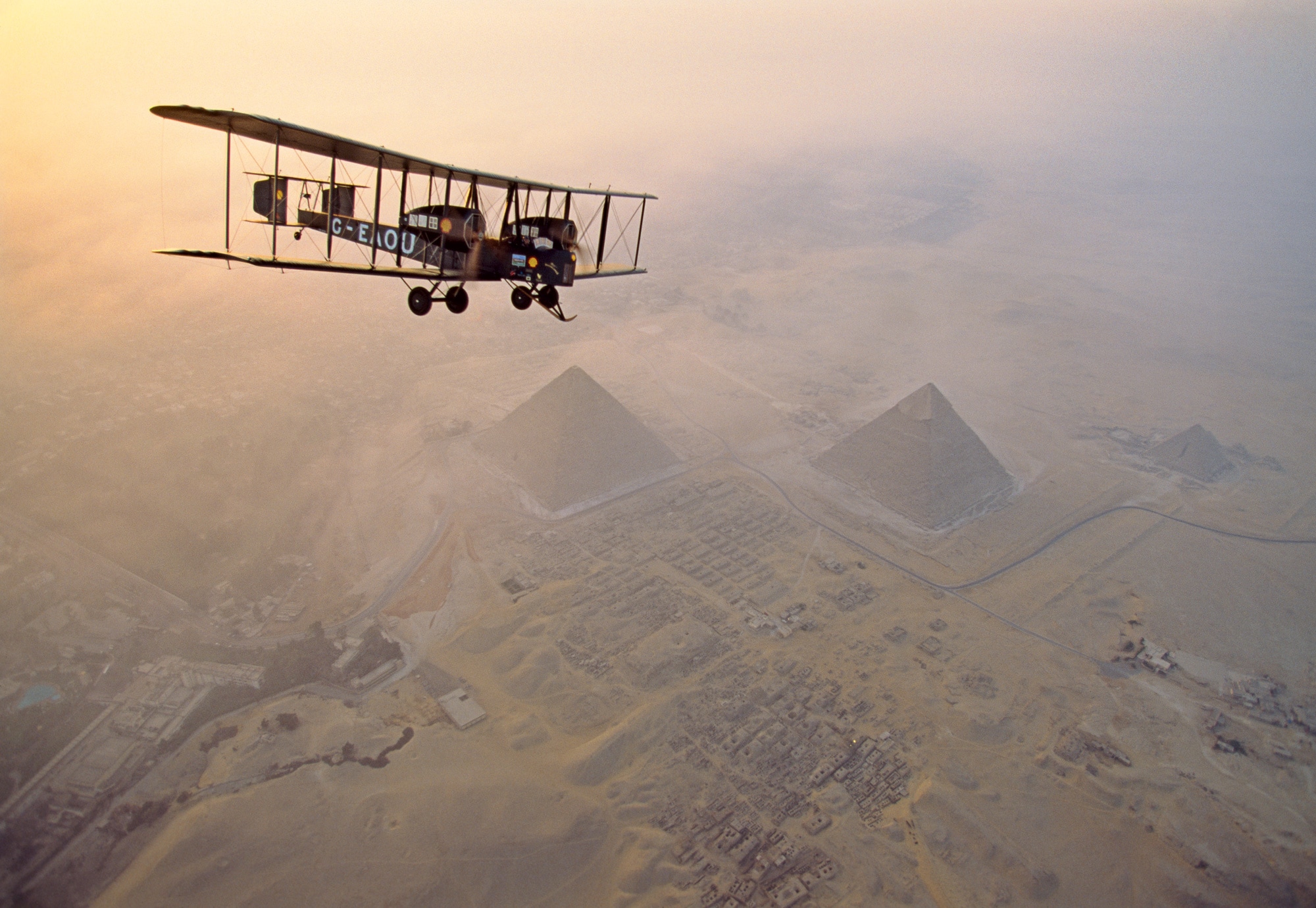
A Vickers Vimy biplane, a replica of the aircraft used by the British Royal Air Force in Egypt in the 1920s, soars over the plain of Giza, with the pyramids still shrouded in the haze of the early morning hours.
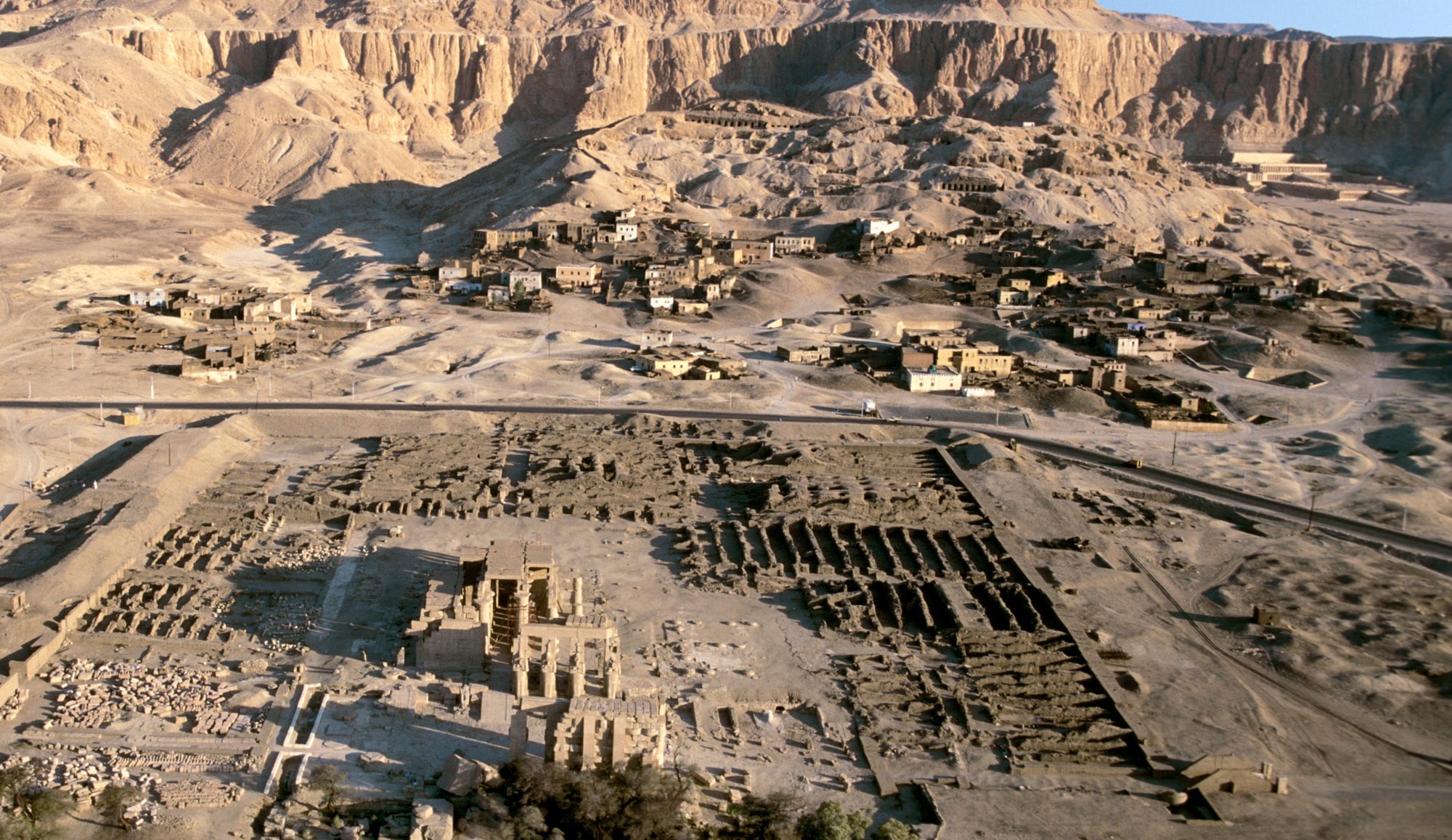
The Ramesseum, built in 1258 BC by Ramses II, as a temple dedicated to himself. Ramses the Great, as he was later called, was indeed the king of kings, the most powerful (and megalomaniac) ruler of classical Egypt, who led the country to the peak of its power and achieved various records: he had the longest reign of all his counterparts in the New Kingdom (67 years), the largest territory (from Nubia to Syria), the longest lifespan (he died at around 90 years old), the most populous family (dozens of wives, nearly 100 children), and the most imposing stature (6 feet tall, exceptional for the time).
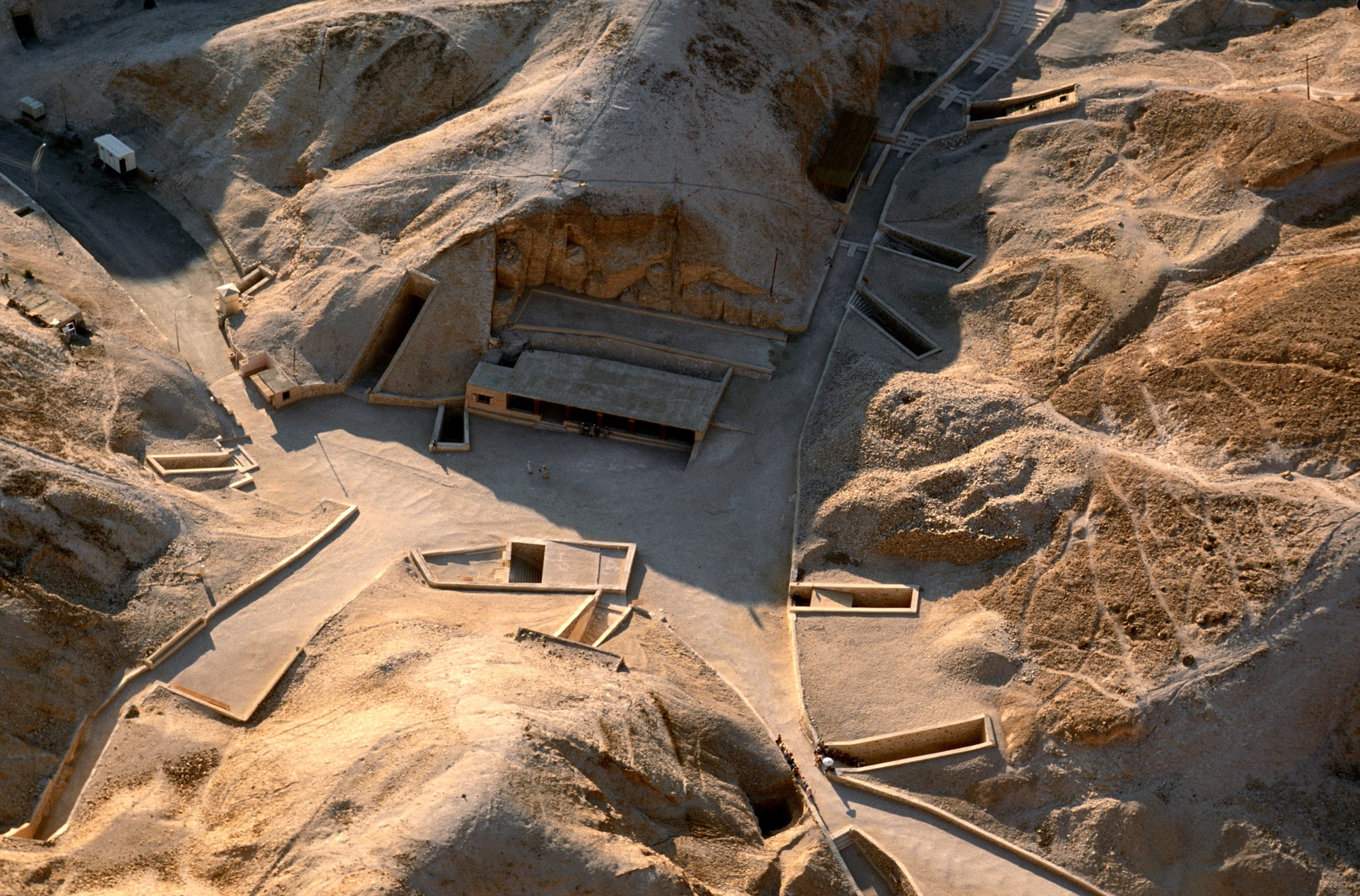
West Thebes and the area of the Valley of the Kings was the realm of the dead, where more than 400 tombs of kings, queens, priests, nobles, princes, and even workers have been discovered. In this photo, you can see the entrances to the tombs of Tutankhamun (in the center) and Ramses II (on the far left).
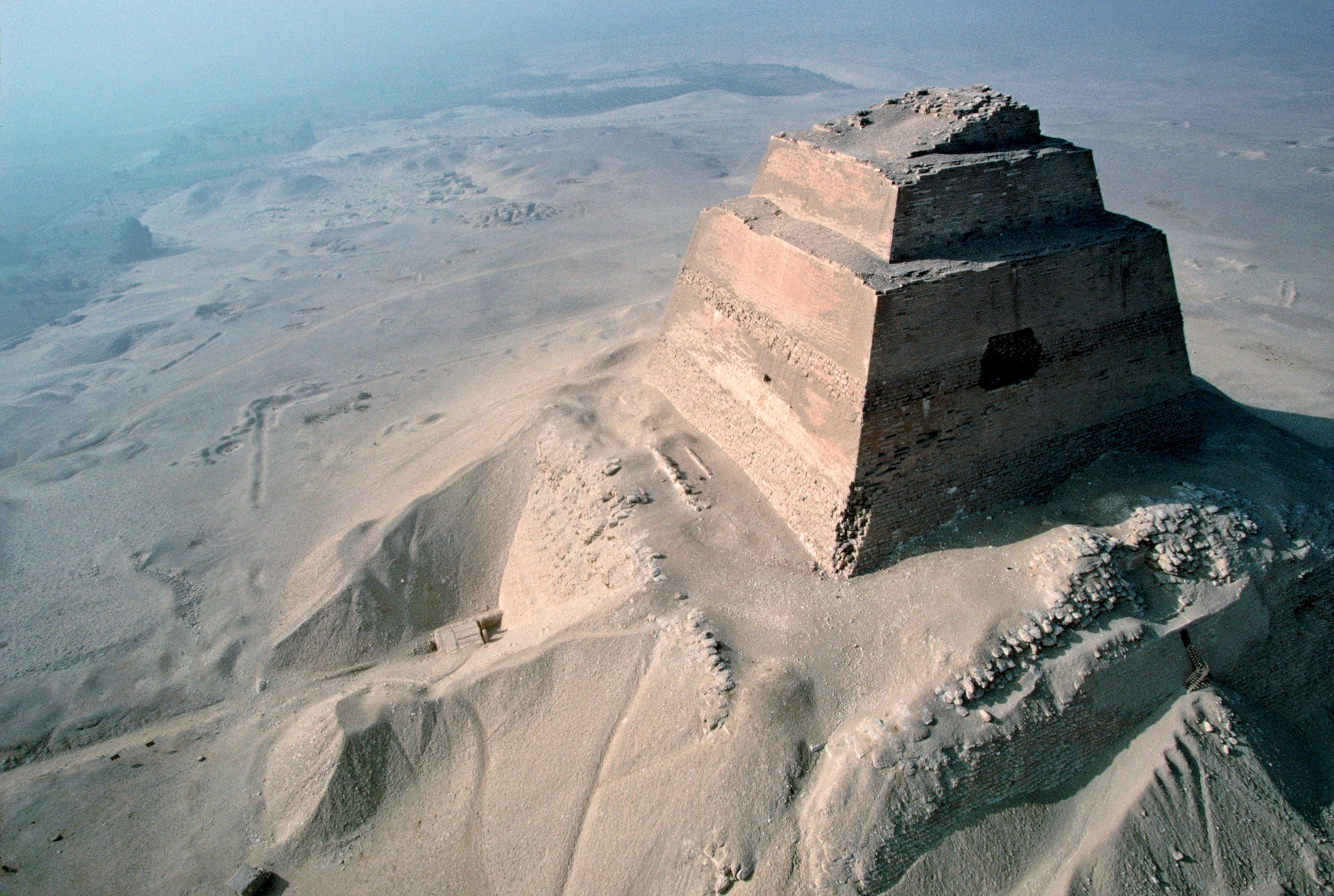
The Meidum Pyramid, standing over 40 meters tall, was completed around 2620 BC in its current “step pyramid” form. It was later transformed into a “smooth-sided” pyramid, but over time, the outer walls collapsed. Its construction was initiated by Pharaoh Huni and completed by his successor Snefru, the father of Khufu (also known as Cheops).
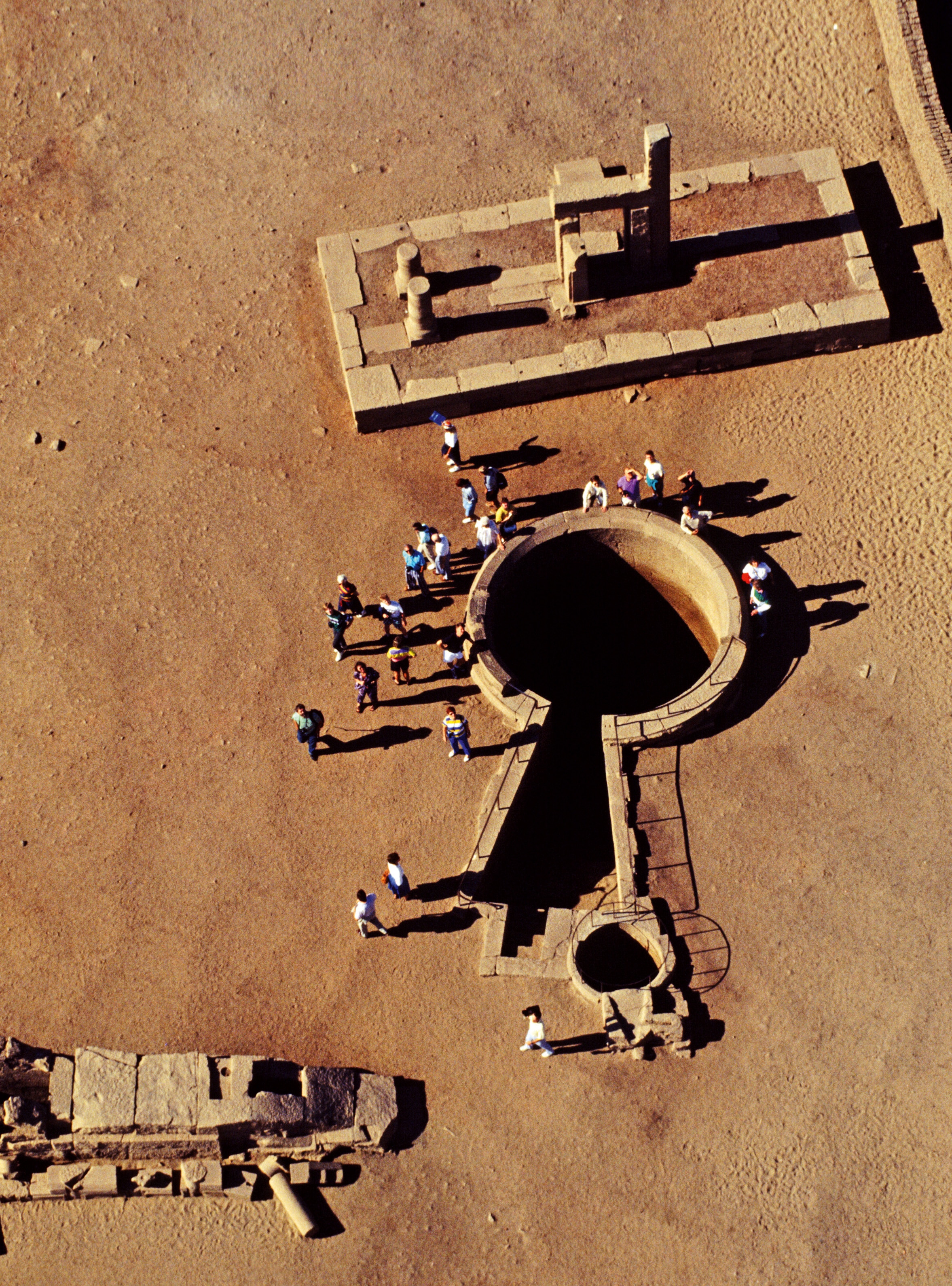
A nilometer near the Ptolemaic temple of Kom Ombo. It is a system of wells that, utilizing the principle of communicating vessels, allowed for the estimation of the water levels of the Nile.
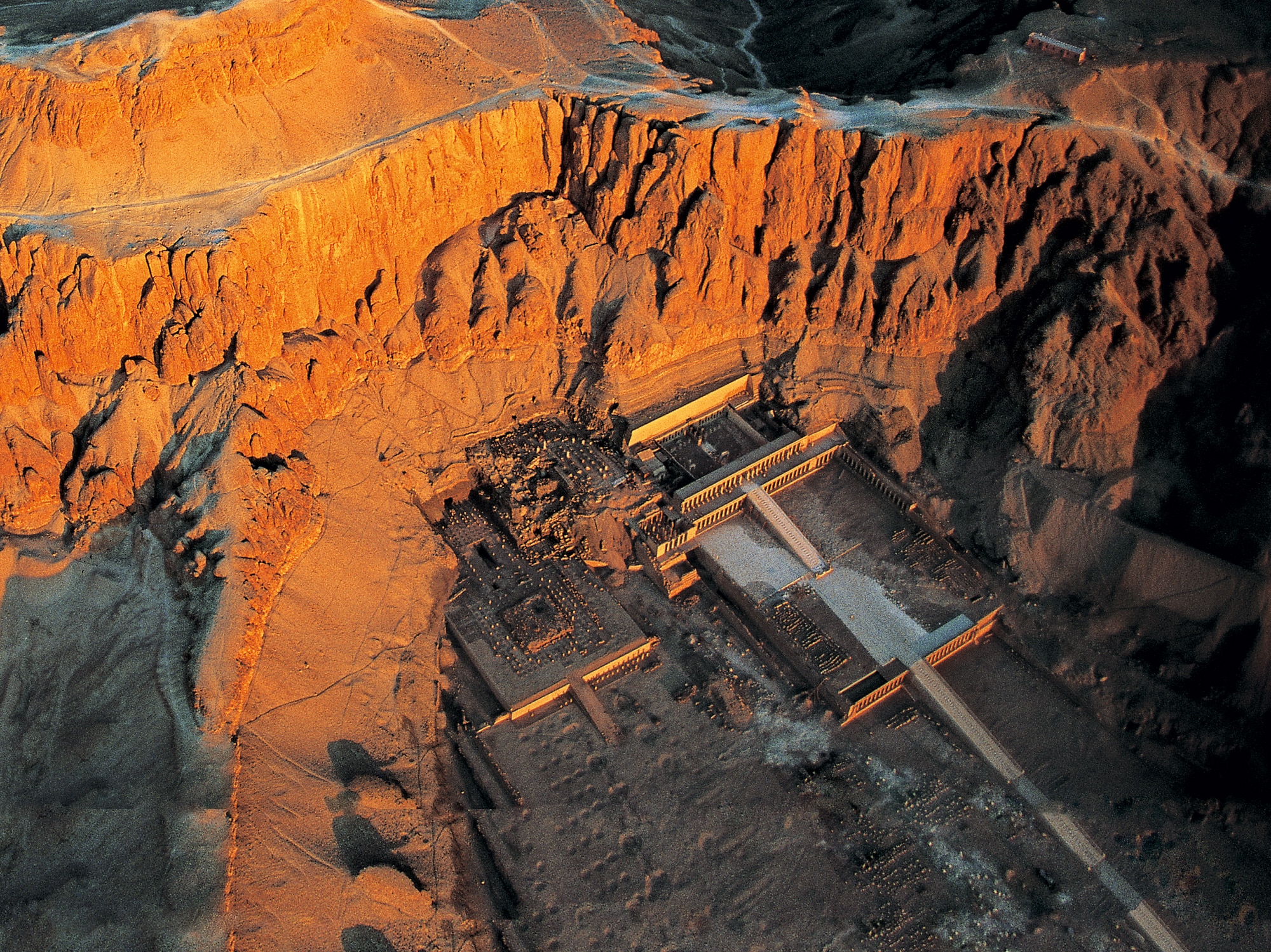
The temples of Mentuhotep II (21st century BC), Hatshepsut, and Thutmose III (15th century BC) are located in the site of Deir el-Bahari in West Thebes (near Luxor). Beyond the ridge extends the Valley of the Kings, which houses the royal tombs of the New Kingdom.
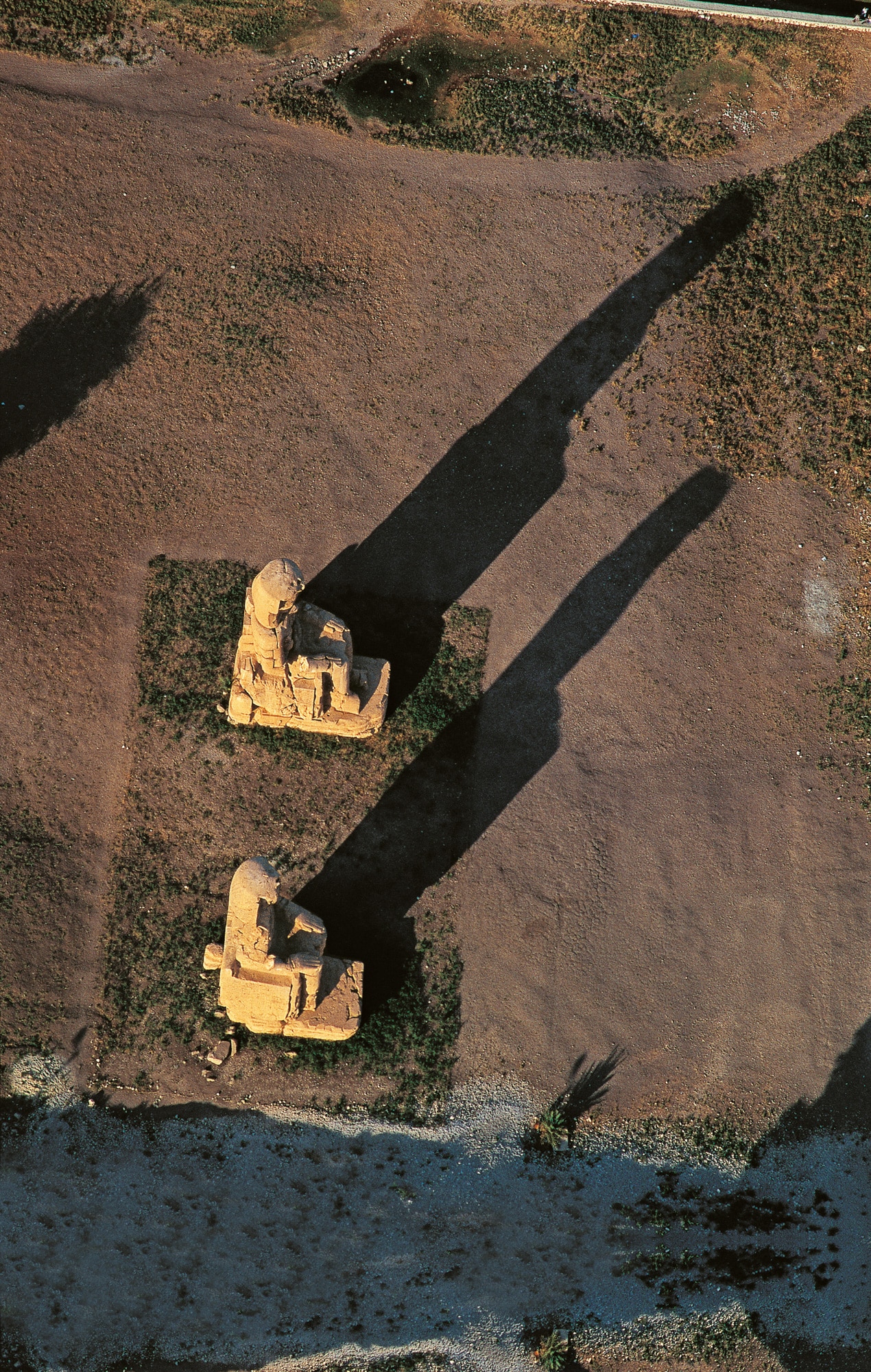
The colossal statues (18 meters tall) of Amenhotep III (14th century BC), which the Greeks renamed “Colossi of Memnon” after a legendary Ethiopian hero. They were part of a temple, now almost entirely vanished, in West Thebes.
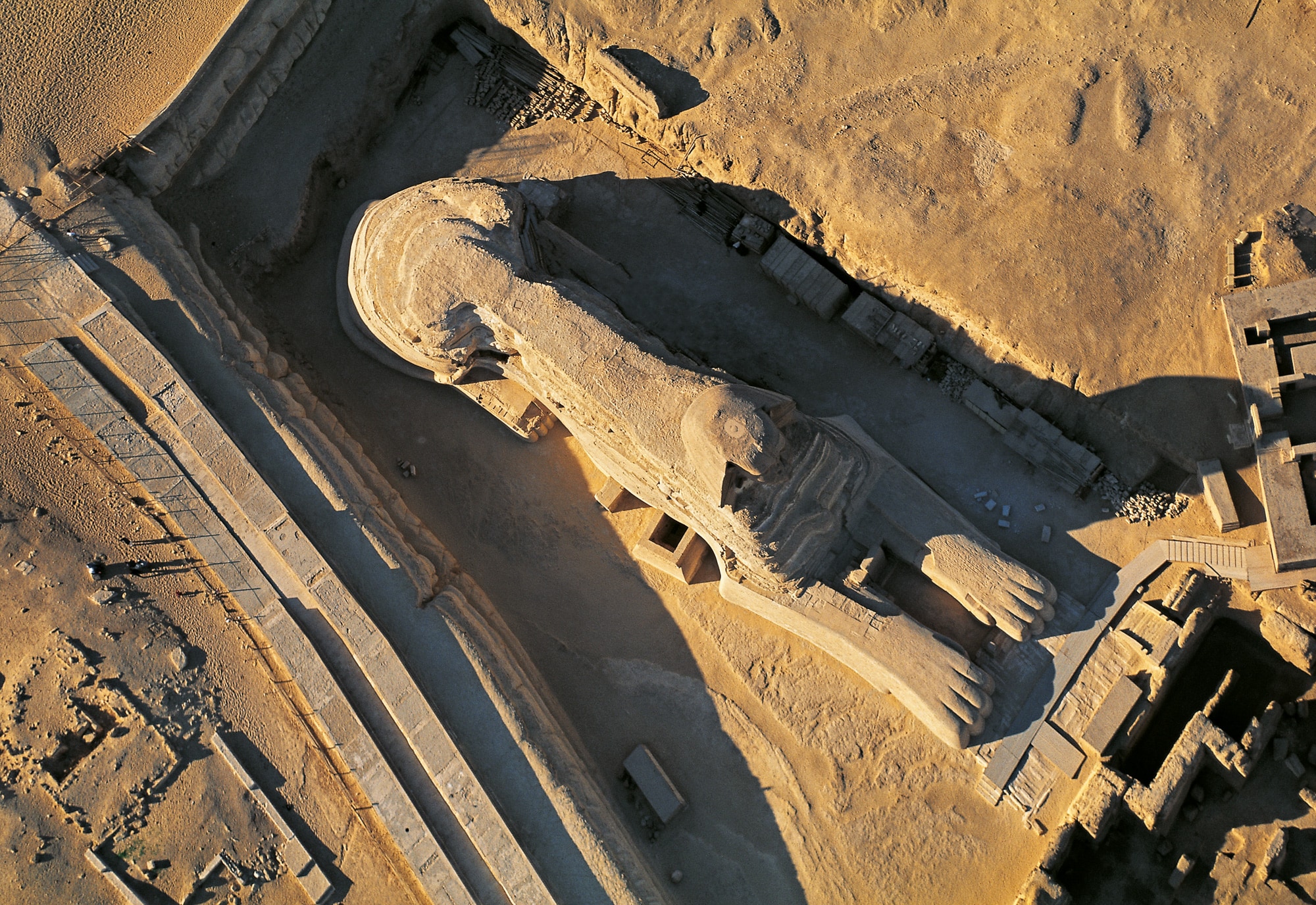
The Sphinx of Giza, located near Cairo, depicts the pharaoh Khafre (who had it constructed approximately 4,500 years ago) with the body of a lion. Carved out of a limestone outcrop, it is approximately 74 meters long and 20 meters tall.
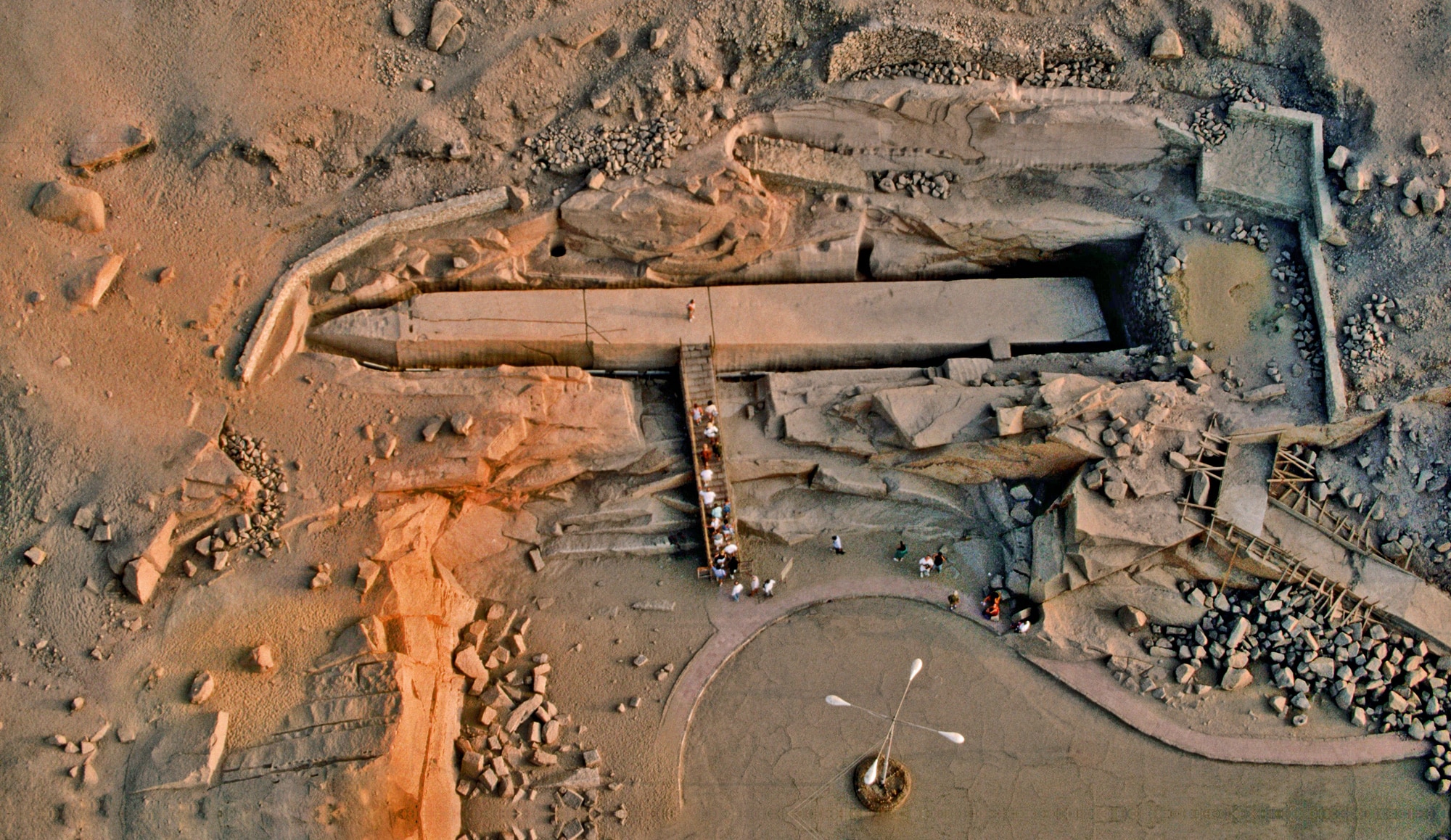
The Unfinished Obelisk of Aswan, measuring approximately 42 meters in length and weighing 1,150 tons. From its study, many insights have been gained about the techniques used by the ancient Egyptians to extract obelisks from quarries.
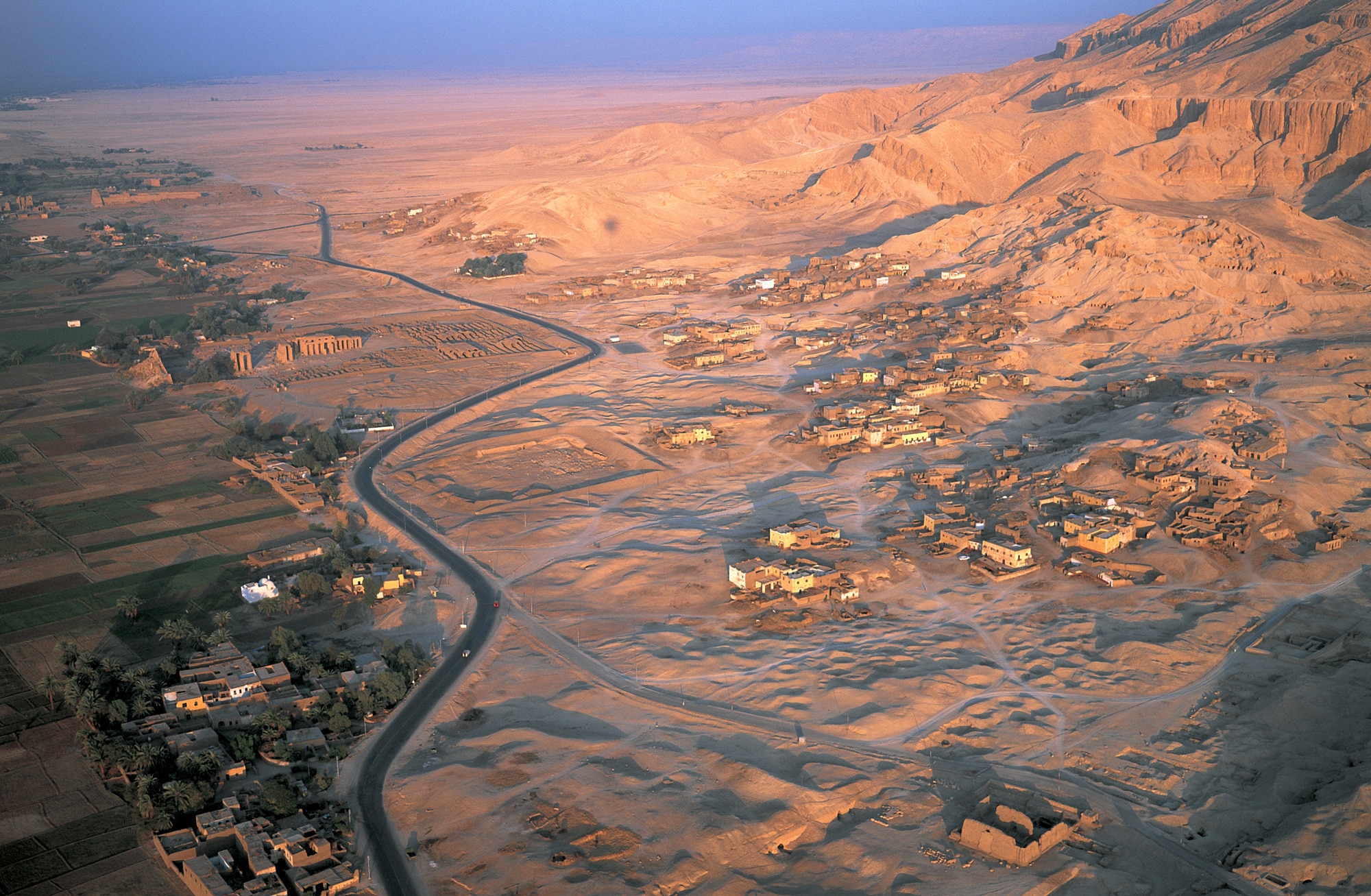
The village of Deir el-Bahari, located in the Valley of the Kings (1479-1457 BC). The ancient Egyptians believed in the afterlife, provided that the body of the deceased arrived there intact, aided by magical spells.
Photo: © Sylvain GRANDADAM/HOA-QUI
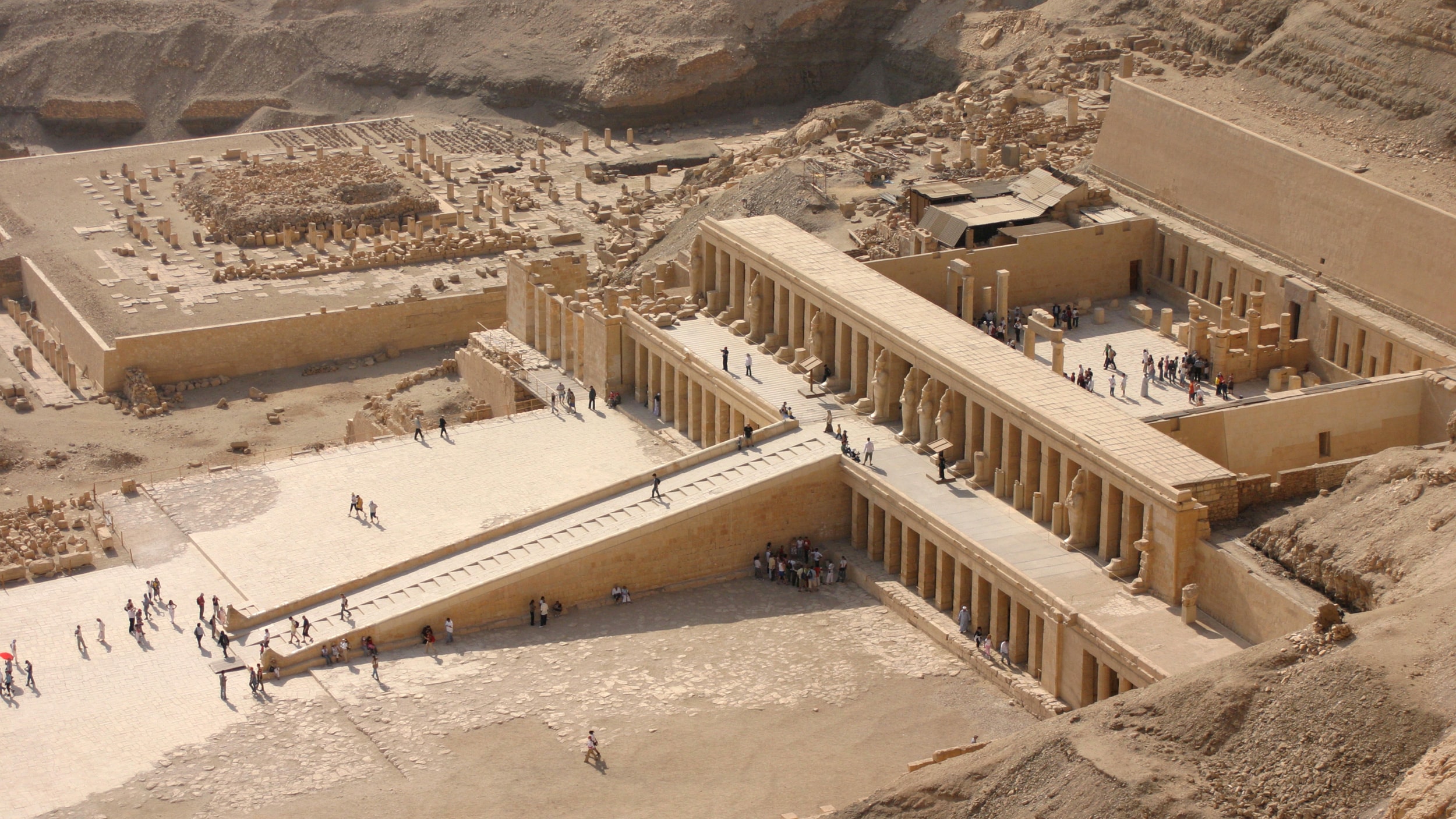
The funerary temple of Hatshepsut in the Valley of the Kings, near Luxor. The architect who “signed” it was Senenmut, a favored individual of the queen. Senenmut was granted the privilege of a secret tomb beneath the courtyard in front of the temple.
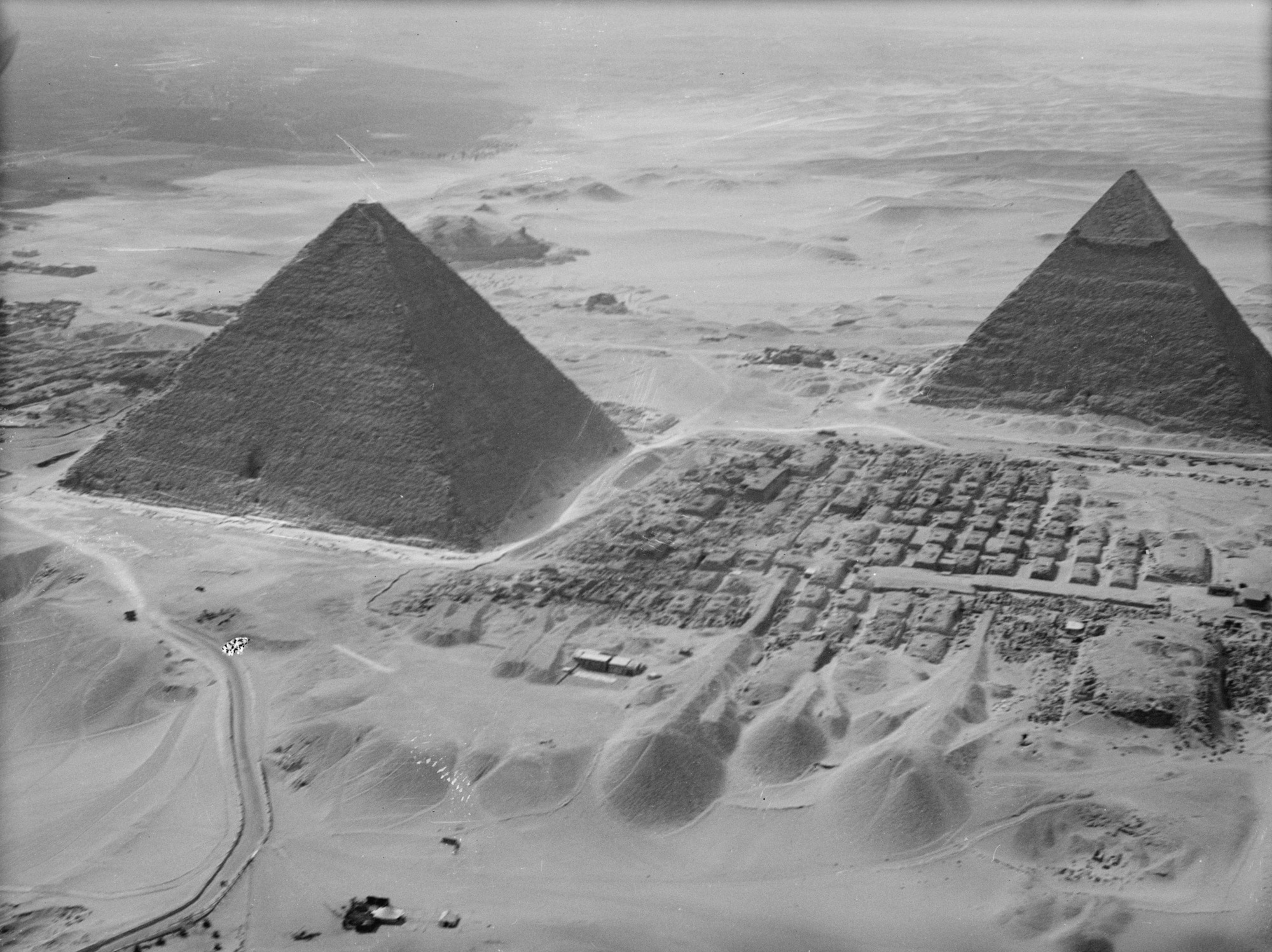
A historic photo: one of the earliest aerial views of the two main pyramids of Giza. We are in 1932.

